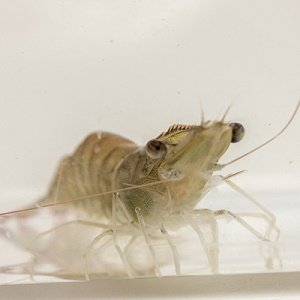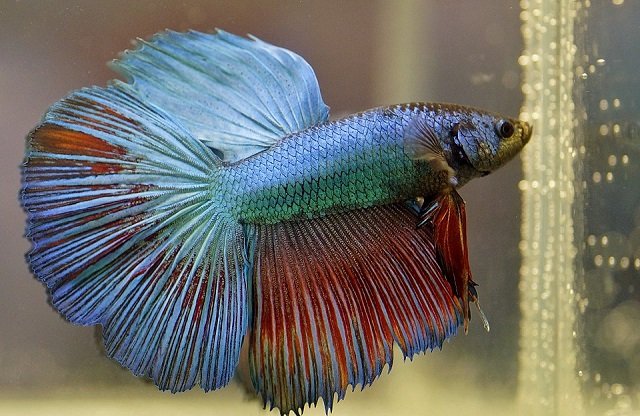
In the field of fish farming, optimizing fish growth and meat quality remains a priority for researchers and industry professionals.
A study published by researchers from East China Normal University has shed light on the potential of valeric acid, a short-chain fatty acid (SCFA), to improve the meat quality of Nile tilapia (Oreochromis niloticus) through the gut-muscle axis.
The research, published in the journal Aquaculture, is pioneering—not only highlighting the biological mechanisms behind the effects of valeric acid but also opening new avenues for improving tilapia aquaculture practices.
Understanding short-chain fatty acids (SCFAs) and their role in aquaculture
Short-chain fatty acids (SCFAs), including acetate, propionate, and butyrate, are well known for their beneficial roles in maintaining gut health, modulating the immune system, and regulating metabolism. These bioactive compounds, produced by gut microorganisms, have also been shown to influence metabolism and skeletal muscle function through the gut-muscle axis.
Recent studies have demonstrated that SCFAs can improve meat texture and quality in various animals, including pigs, chickens, and lambs. However, the effects of valeric acid, another SCFA, on aquatic animals have remained largely unexplored—until now.
The study: Valeric acid and Nile tilapia
This study aimed to investigate the effects of valeric acid on Nile tilapia, a species of great economic importance in global aquaculture.
Researchers randomly assigned a total of 360 juvenile tilapia to 12 tanks and fed them one of four diets for 60 days: a control diet (CK) and three experimental diets supplemented with 500 mg/kg (CK + LV), 1000 mg/kg (CK + MV), and 2000 mg/kg (CK + HV) of sodium valerate. The diets were isolipidic (6% lipids) and isonitrogenous (37% protein) to ensure consistency.
Key findings: Valeric acid improves meat firmness
The study’s results revealed that valeric acid significantly improved the firmness of Nile tilapia meat (p < 0.01). This improvement was attributed to a reduction in myofiber size (p < 0.001), which plays a crucial role in determining meat texture.
Stay Always Informed
Join our communities to instantly receive the most important news, reports, and analysis from the aquaculture industry.
Myofibers, which constitute approximately 80% of skeletal muscle mass, are formed through the proliferation and differentiation of myoblasts, a process regulated by myogenic regulatory factors (MRFs) such as Myod, Myf5, and Myogenin.
Mechanisms behind the effects of valeric acid
Transcriptomic analysis of muscle tissue from valerate-treated tilapia revealed significant enrichment of the Forkhead box O (FOXO) signaling pathway (p < 0.001). Further analyses, including qPCR, Western blot, immunohistochemistry, and immunofluorescence, demonstrated that valeric acid inhibits muscle cell proliferation by activating the FOXO signaling pathway. This activation suppresses the nuclear export of FOXO, leading to the downregulation of cyclins and cyclin-dependent kinases (CDKs) (p < 0.01), which are essential for cell cycle progression.
Additionally, researchers found that valeric acid suppresses muscle differentiation by inhibiting the transcription and protein expression of MRFs (p < 0.001). These findings were further validated in C2C12 myoblasts and myotubes, confirming that valeric acid inhibits both myoblast proliferation and myotube differentiation (p < 0.001).
Implications for fish farming
The study’s findings have significant implications for the fish farming industry. By elucidating the mechanisms through which valeric acid enhances meat firmness, researchers have introduced a novel approach to improving fish meat quality. This could lead to the development of specialized diets supplemented with valeric acid, offering a natural and effective way to enhance the texture and quality of farmed fish.
The study’s results could help tilapia farmers improve meat quality and potentially extend the shelf life of tilapia products. However, further research is needed to fully understand species-specific effects and underlying mechanisms. As the aquaculture industry continues to grow, understanding and leveraging this gut-muscle axis could pave the way for more sustainable and efficient fish farming practices.
Conclusion
In conclusion, the study provides compelling evidence that valeric acid can improve the meat quality of Nile tilapia by reducing myofiber size through the inhibition of myoblast proliferation and differentiation. By activating the FOXO signaling pathway and suppressing MRFs, valeric acid offers a promising avenue for enhancing fish meat texture in aquaculture.
As research in this field continues to progress, the potential applications of SCFAs like valeric acid for improving animal growth and product quality are likely to expand, benefiting both producers and consumers.
The study was funded by the National Key Research and Development Program and the National Natural Science Foundation of China.
Contact
Mei-Ling Zhang
Laboratory of Aquaculture Nutrition and Environmental Health (LANEH), School of Life Sciences, East China Normal University
Shanghai 200241, China
Email: mlzhang@bio.ecnu.edu.cn
Reference (open access)
Li, L., Wang, Z., Wang, T., Zhou, N., Qiao, F., Du, Z., & Zhang, M. (2025). Valerate enhances flesh hardness by inhibiting muscle proliferation and differentiation in Nile tilapia (Oreochromis niloticus): An in vivo and in vitro study. Aquaculture, 600, 742222. https://doi.org/10.1016/j.aquaculture.2025.742222
Editor at the digital magazine AquaHoy. He holds a degree in Aquaculture Biology from the National University of Santa (UNS) and a Master’s degree in Science and Innovation Management from the Polytechnic University of Valencia, with postgraduate diplomas in Business Innovation and Innovation Management. He possesses extensive experience in the aquaculture and fisheries sector, having led the Fisheries Innovation Unit of the National Program for Innovation in Fisheries and Aquaculture (PNIPA). He has served as a senior consultant in technology watch, an innovation project formulator and advisor, and a lecturer at UNS. He is a member of the Peruvian College of Biologists and was recognized by the World Aquaculture Society (WAS) in 2016 for his contribution to aquaculture.




